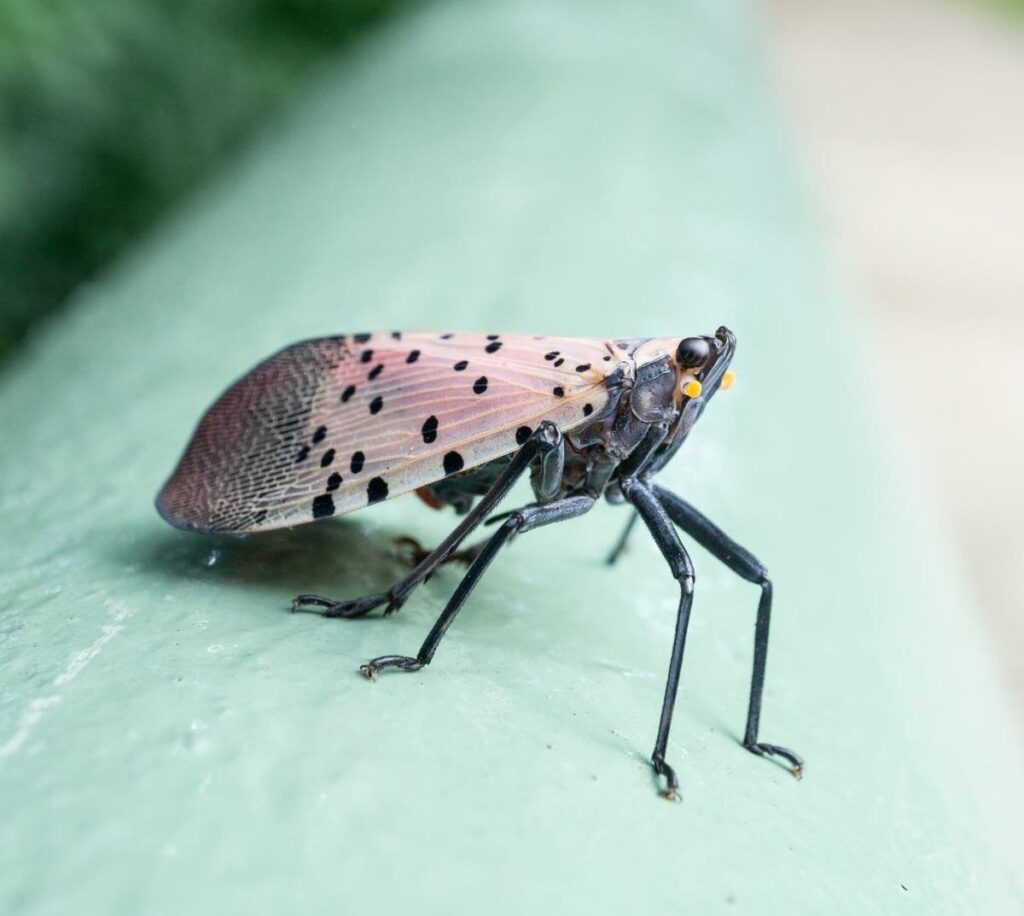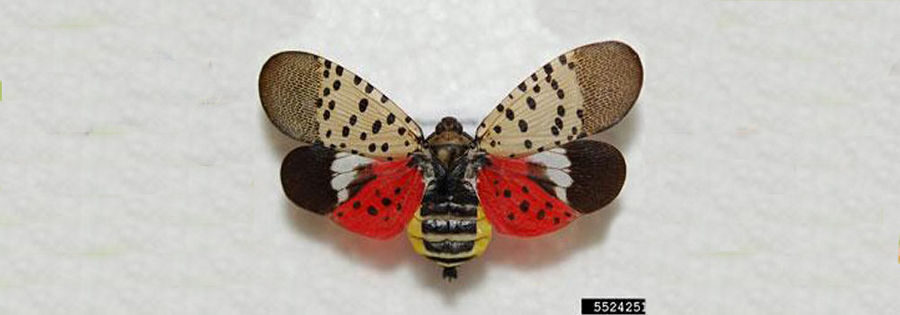In September 2023, Illinois faced an alarming development in its ongoing battle against invasive pests. The dreaded spotted lanternfly (Lycorma delicatula), a challenging threat to trees, was officially identified within the state’s borders for the first time. This invasive insect’s arrival carries significant implications for Illinois’ natural landscapes and tree populations.
The Spotted Lanternfly Invasion
Originating from Asia, the spotted lanternfly has been steadily making its way across the United States since its initial detection in Pennsylvania in 2014. Recognizable by its striking spotted wings and vibrant appearance, this insect has been causing mounting concerns among experts and environmentalists. Now, Illinois must confront this pest head-on, especially its potential harm to trees.

Trees: A Preferred Host
The Illinois Natural History Survey (INHS) has categorized the spotted lanternfly as one of the “Most Unwanted” pests due to its potential to inflict severe damage on trees. These insects are highly polyphagous, meaning they feed on a wide variety of plants, including many species of trees. The U.S. Department of Agriculture’s (USDA) Animal and Plant Health Inspection Service (APHIS) reports that the spotted lanternfly can attack over 70 different plant species, many of which are trees commonly found in Illinois. Maples are the most susceptible species of common landscape tree that attracts the spotted lanternfly.
Tree Damage and Impact
Spotted lanternflies feed on trees by using their piercing-sucking mouthparts to extract sap from the phloem, the plant’s nutrient-conducting tissue. This feeding behavior weakens trees, making them susceptible to diseases, environmental stressors, and other pests. Here are some ways in which these invasive insects harm Illinois trees:
- Stress and Weakening: Continuous sap extraction can weaken a tree, making it more vulnerable to other stress factors such as drought and extreme temperatures.
- Sooty Mold: Spotted lanternflies excrete a sugary substance called honeydew. This honeydew often coats leaves and branches, providing a medium for the growth of sooty mold. The mold can inhibit photosynthesis and further stress the tree.
- Dieback: Severe infestations can lead to dieback, where branches and parts of the tree begin to wither and die. This not only affects the tree’s health but also its aesthetics.
- Tree Mortality: In some cases, particularly with young or stressed trees, spotted lanternfly infestations can lead to the death of the tree.
Preventative Measures
Combatting the spread of spotted lanternflies in Illinois requires an intensive effort. Public awareness campaigns, regulatory measures, and proactive tree care are all crucial components of this battle.
One of the effective ways to protect your trees from spotted lanternflies is through preventative measures such as trunk sprays. Homer Tree Care offers a specialized preventative trunk spray service designed to combat this pest and safeguard your valuable trees. Our arborists are equipped with the knowledge and tools necessary to apply these treatments safely and effectively.
The threat posed by spotted lanternflies to Illinois trees is real, but it’s not insurmountable. By staying informed, taking preventative measures, and seeking professional assistance when necessary, we can protect our trees and preserve the natural beauty and ecological balance of Illinois. Contact Homer Tree Care today to learn more about our preventative trunk spray services and join the fight against this invasive pest.

